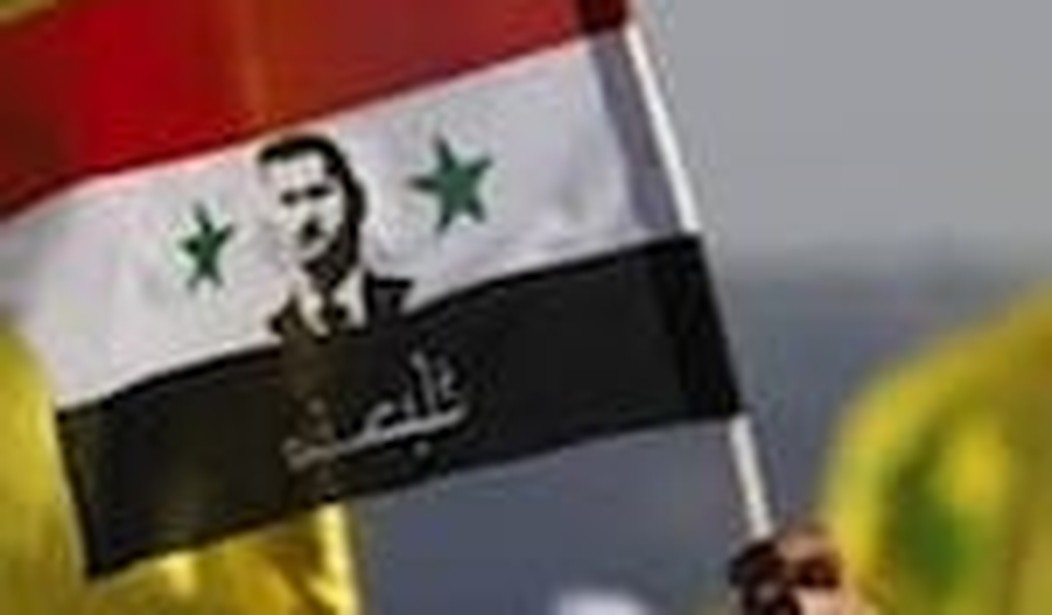The two rockets that exploded in the Shiyah neighborhood of south Beirut marked a significant turning point in the Syrian civil war. The Shiyah neighborhood is located in the Dahiyeh area of the city, which houses the various offices of the Hezbollah organization. The neighborhood is populated by Lebanese Shi’ite supporters of Hezbollah.
No organization has claimed responsibility for the firing of the two Grad rockets, but as Syrian rebel Ammar al-Wawi said in an interview shortly following the explosions, the rockets were a warning by someone to Hezbollah that their engagement on behalf of the Assad regime would have consequences.
The timing of the attacks was notable: they came just 24 hours after Hezbollah leader Hassan Nasrallah had vowed that his organization would fight on in Syria until Assad’s “victory.”
There has been a significant rise in media coverage of Hezbollah involvement — and to a lesser extent, the Iranian involvement — in the fighting in Syria in recent weeks. But the involvement of Tehran and its client in the Syrian war is not new. The reason it appears new is because much of the Western media preferred for a long time to ignore clearly available evidence of the full mobilization by the Iranians of their various regional clients and proxies on behalf of the Assad regime. (This reporter was writing on the subject as far back as late 2011 — even then, there was plenty of evidence.)
As early as April 14, 2011, U.S. officials confirmed that Iran was aiding in the repression of what was then a mostly non-violent uprising. A classified United Nations report from 2012, leaked to the media, stated that Iran was by then covertly shipping arms to Syria in violation of international sanctions. Iran also provided support through its paramilitary Quds Force, a special unit of the Iranian Revolutionary Guards Corps.
Arab media reports from early 2012 began to carry eyewitness accounts suggesting the presence of Hezbollah specialists in the fighting in Syria. I also received similar testimony from rebel fighters during trips to Syria.
The involvement of the IRGC in the Syrian war was confirmed by the testimony of Riad Hijab, a former Syrian prime minister who defected earlier this year. Hijab said that Suleimani was managing the Iranian regime’s intervention in the war in Syria. A senior IRGC official, Hassan Shateri, was killed on Syrian soil.
But the longstanding involvement of Iran and Hezbollah in the Syrian civil war has now reached hitherto unprecedented heights both in extent and in visibility.
Iran and its allies would clearly have preferred to retain their low-key, mainly advisory role in the conflict; this has proved impossible. Bashar Assad was not able to deliver the goods by himself, or with only minimal assistance. Left to his own devices, he would have faced defeat. Bashar’s departure would have spelled disaster for Iran’s ambitions in the region. Most importantly, Tehran’s access to the frontline of the Israel-Islamist conflict through its Hezbollah proxy would have been blocked.
The result is that over the course of 2013, an increasingly overt deployment of Iran-trained forces and Hezbollah fighters has been discernible. Most visibly, Hezbollah has in recent months deployed a growing contingent of its men in the area of Qusayr in Homs province. The movement needs to keep hold of this area so as to ensure that Iran can continue to supply it from the ports of western Syria. This area is firmly held by the regime, but Qusayr is the link between the regime-controlled western coastal area of Syria and Lebanon’s northern Beqa’a, controlled by Hezbollah.
So this land link must be maintained to keep the weapons flowing to Hezbollah. And Hezbollah men are bearing the brunt of the fierce fight for Qusayr City, now underway. Facebook pages maintained by the movement are posting new faces and details of “martyrs” killed in the fighting each day.
No less importantly, Iran has — with Hezbollah assistance — spent the last months establishing a new instrument of military power to fight the rebellion against Assad. This new element is the “National Defense Force.” Trained by IRGC and Hezbollah personnel, this is a militia-type apparatus. It consists overwhelmingly of members of Assad’s own Alawi sect and other minority communities. So far, it shows a tendency toward committing massacres, but also a real commitment to the fight that has not been evident among much of Assad’s army over the last two years.
So Iran and Hezbollah together have played the key role in the reversal of the direction of events in the Syrian civil war — from regime retreat to the current consolidation and counter-attack. Their commitment to the war is now visible, open, and total. It has been noticed also by the Sunni rebels, who now appear determined to show Hezbollah that cross-border interference is a two-way street.
The relative stability in Lebanon over the last half-decade is largely the result of the perception that Hezbollah was too strong to be challenged. The Syrian rebellion has upset that perception, making Hezbollah vulnerable in its backyard. We may be witnessing the first moves of an attempt by elements among the Syrian rebels, presumably in cooperation with Sunnis in Lebanon, to take advantage of this vulnerability.









Join the conversation as a VIP Member